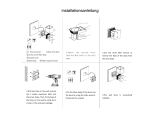
6 Table of Contents
Table of Contents
Sport Tires.................................................... 3
Driving on Race Circuit (e.g. Sports Driving
Schools, Club Sport Events) ........................... 3
Porsche Ceramic Composite Brake (PCCB)...... 4
Setting and Operating Vehicle Components
when Driving.................................................. 4
Ground Clearance.......................................... 4
Before driving off........................................... 8
Break in hints for the first
2,000 miles/3,000 kilometers...................... 10
Operation, Safety.............................. 13
Keys........................................................... 15
Security Wheel Bolts .................................... 15
Doors ......................................................... 18
Central Locking ........................................... 19
Alarm System,
Passenger Compartment Monitoring ............. 23
Power Windows........................................... 25
Door Mirrors................................................ 27
Rear Window Defogger, Door Mirror Heating.. 29
Seat Adjustment and Head Restraints............ 30
Seat Memory............................................... 33
Heated Seats .............................................. 35
Seat Ventilation............................................ 36
Rear Seat Backrests.................................... 37
Steering Wheel Adjustment........................... 37
Steering Wheel Heating................................ 38
Multi-Functional Steering Wheel..................... 39
Sun Visors................................................... 40
Safety Belts................................................. 41
Airbag Systems ........................................... 44
Child Restraint Systems................................ 50
LATCH System
Child seat bracket on the passenger’s seat.... 54
Child Restraint Anchorages........................... 55
Rollover Protection System........................... 56
Parking Brake.............................................. 57
Brakes........................................................ 58
ABS Brake System
(Antilock Brake System)................................ 61
Clutch Pedal................................................ 62
Porsche Traction Management (PTM)............. 63
Porsche Torque Vectoring (PTV) .................... 64
Sport Mode................................................. 65
Porsche Stability Management (PSM)............. 67
Porsche Active Suspension Management
(PASM)........................................................ 70
Dynamic Engine Mounting (PADM).................. 70
Retractable Rear Spoiler............................... 71
Interior Lights.............................................. 73
Parking Aids................................................ 74
Ignition/Starter Switch with
anti-theft Steering Lock................................. 76
Starting Procedures..................................... 79
Stopping Engine........................................... 80
Emergency Flasher Switch............................ 81
Light Switch................................................. 82
Welcome Home Lighting............................... 83
Automatic Headlight Beam Adjustment........... 83
Turn Signal/Headlight Dimmer/Parking light/
Flasher Lever............................................... 84
Windshield Wiper/Washer Lever .................... 85
Automatic Speed Control............................. 88
Cupholder................................................... 90
Ashtray....................................................... 91
Cigarette Lighter......................................... 92
Storage in the Passenger Compartment ....... 93
Luggage Compartment Lid and
Engine Compartment Lid ............................. 95
Luggage Compartment................................ 97
Trunk Entrapment........................................ 98
Porsche Communication Management
(PCM)......................................................... 99
Car Telephone and Aftermarket Alarms ....... 101
iPod, USB and AUX.................................... 102
Fire Extinguisher ....................................... 103
HomeLink................................................. 104
Automatic Air Conditioning System,
Heated Rear Window/
Door Mirror Heating........................ 107
Automatic Air Conditioning System ............. 108
Central and Side Vents............................... 111
Fresh-air Intake ......................................... 111
Heated Rear Window/Door Mirror Heating... 112
Instruments, On-Board Computer,
Warnings ....................................... 113
Instrument Panel USA Models...................... 114
Instrument Panel Canada Models................ 116
Engine Oil Temperature.............................. 118
Automatic Speed Control Indicator light ...... 118




















